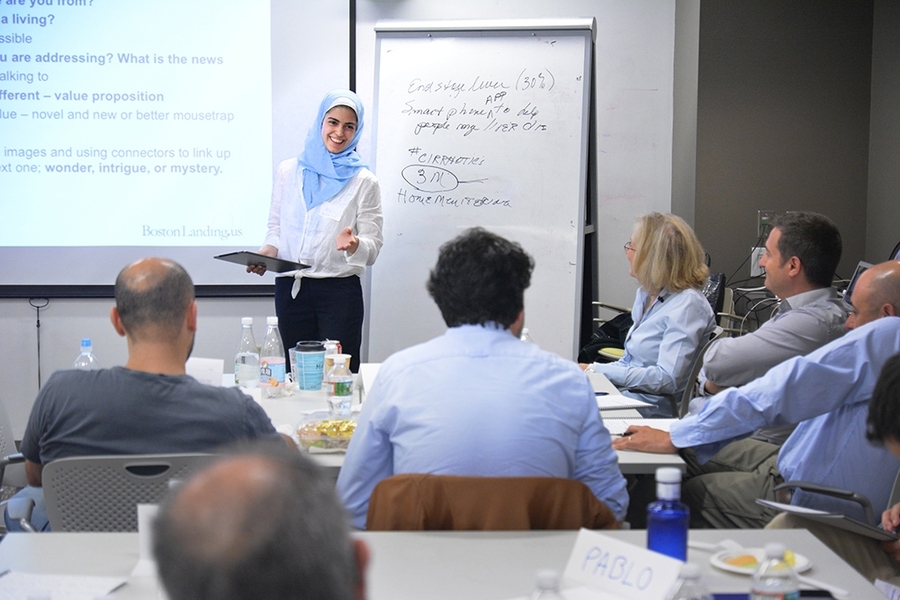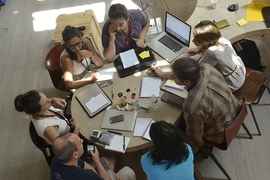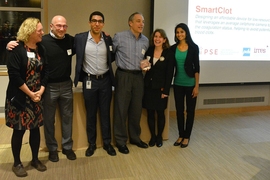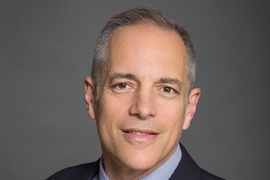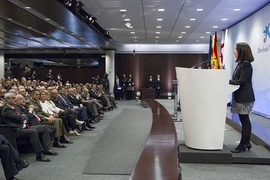The 14 teams admitted to MIT linQ's IDEA² Global for 2018 have begun their seven-month program, which provides intensive innovation method training, collaborative project development, team-specific mentoring, and expertise to help projects move from novel idea to real-world application.
MIT linQ is an international biomedical technology innovation consortium, based in the Institute for Medical Engineering and Sciences (IMES). The new teams convened from May 31 to June 2 for their first Impact Proposition Workshop, where they made their baseline project pitches and engaged with program faculty to begin refining their research and development strategy.
“These very competitive teams address an exciting range of unmet medical needs with their new technologies,” says Mercedes Balcells-Camps, the program chair of IDEA² Global and a principal research scientist. “And we’re thrilled that this year to welcome our first teams from Ireland and Tunisia.”
Proposals to IDEA² Global were invited from anywhere in the world and are sponsored by several organizations dedicated to biomedical technology innovation. Project sponsors include Fundación para la Innovación y la Prospectiva en Salud en España, a Spain-based nonprofit dedicated to advancing new healthcare technologies; the Institute for Medical Engineering and Science; MassBIO; Cantabria Labs, a Spain-based pharmaceutical R&D company; the Medicine Innovation Program at Massachusetts General Hospital; the U.S. Department of Veterans Affairs, and MIT Hacking Medicine.
The projects selected for 2018 included are:
- “A new strategy to fight against viral retrotranscription,” a project proposing to interrupt the development cycle of pathogenic viruses such as HIV or Herpes;
- “Ear Level Activity Tracking/Falls Detection and Prevention,” a project to identify and test a minimal viable product that integrates sensor technology for activity tracking and falls detection/prevention with a hearing aid;
- “Open Retinoscope,” a smartphone-enabled device for eye exams that can screen for diabetic retinopathy and other high-prevalent pathologies;
- “Circulating tumor cells nanoplasmonic biosensor (CTCnanoSen),” a device to detect early metastasis of cancer in patients’ blood;
- “COVERGEL Project,” a family of medical devices for gastrointestinal endoscopy to perform bioactive treatments and prevent adverse events after endoscopy;
- “PEPSTOB (Peptide to stop obesity),” a medication to reduce lipid accumulation in tissues and organs to treat conditions like obesity and heptatic steatosis, with an additional cosmetic application;
- “Paciena Prothesis,” a prosthesis to be used as an intraneovaginal mold after neovagina surgery;
- “Creating a Patient-Centered Smartphone or Computer Application for Cirrhosis Management,” a system to manage outpatient care and reduce the need for hospital readmission after treatment;
- “Translational Neuroscience Center,” a hospital-based program to improve the efficiency of translation of novel ideas into practical tools for the diagnosis, treatment, and prevention of brain disorders;
- “Integrating the tools of genomics and neuroscience to reveal causes of neuropsychiatric disorders,” a research initiative to transform psychiatric drug discovery, addressing the growing need to treat mental illnesses;
- “Tex Phototherapy,” a wearable technology to treat neonatal jaundice;
- “Galenband,” a portable, non-invasive heart rhythm monitor to detect intermittent heart arrhythmia symptoms;
- “Bloomer Tech,” a process for transforming everyday fabrics into tools for personalized health care detection, monitoring, and treatment of chronic diseases; and
- “AugGi,” a mobile app that helps patients with digestive disorders take objective measures of their stool characteristics.
The teams were selected competitively based on their potential for impact and their readiness for additional support. Through group innovation training and individualized mentorship and advising, the teams will refine their research and development strategy to maximize their opportunity to create healthcare impact.
After sharpening the focus on the medical need they intend to address in their initial workshop, the teams will now be matched with project mentors and subject and technology experts to help them develop their project over the summer. In October, the teams will meet again in another workshop to refine their project definition. They will gather once more to make their final pitches in December to a panel of judges, who will name the best projects.
Team members say they are looking forward to the training and guidance they will get to advance their projects.
“We believe that our idea could mean a significant improvement in the medical care provided to ophthalmological patients,” says Florencio Gonzalez Marquez, member of Open Retinoscope. “We hope IDEA² will show us the strengths and weaknesses of our project, advise us on how to improve it, and give us tools to [promote it to] companies in the sector that might be interested in the commercializing the device.”
